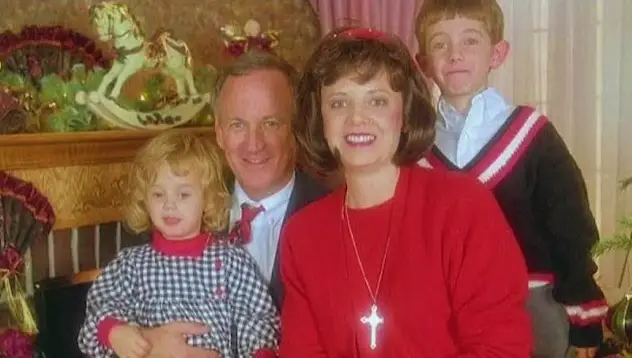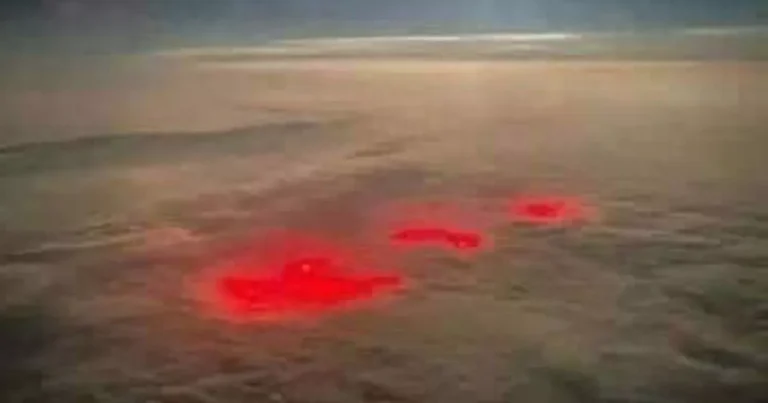The Unsolved Mystery of JonBenét Ramsey: An In-Depth Analysis of the Case
One of the most well-known unsolved mysteries in American history is the murder of JonBenét Ramsey, a six-year-old beauty queen. A tragedy occurred on December 26, 1996, at the family’s home in Boulder, Colorado. What happened that night remains a mystery to investigators, and several theories are circulating about the case.
JonBenét’s mother, Patsy Ramsey, contacted 911 to report that her daughter had been missing and a ransom note had been left behind. However, after JonBenét Ramseys’ body was discovered in the basement of the family’s house, the case turned into a homicide investigation. JonBenét had been strangled and had a fractured skull. Her hands were bound, and duct tape covered her mouth.
Mistakes in the investigation included contamination of the crime scene by police and family members and contradictory claims from the Ramsey family.
Suspicion quickly fell on JonBenét’s parents, John and Patsy Ramsey, who were well-known members of the local social scene. Some thought that the parents were either unintentionally or actively engaged in their daughter’s murder and that they planned the kidnapping to cover up the crime.

JonBenét Ramsey’s Death
Patsy Ramsey contacted 911 on the morning of December 26, 1996, to report that her daughter, JonBenét, was missing. She said she discovered a ransom note asking $118,000 for JonBenét’s safe return. Despite the Ramseys’ claims that they complied with the kidnappers’ requests, a search of the house revealed JonBenét’s body in the basement.
JonBenét’s corpse was discovered with a cable around her neck and a duct tape covering her lips. She had also been hit on the head, resulting in a skull fracture. According to an autopsy, her death was caused by strangulation and a blunt-force head injury. There was no evidence of any other assault.
The finding of JonBenét’s remains sparked instant speculation regarding the Ramseys’ participation in her killing. Many pointed to her body being found in their home and questioned how an intruder could have entered the house undetected.
Investigators also discovered many additional pieces of evidence that cast doubt on the Ramsey family’s involvement. For example, there were indications that the ransom letter was written on a notepad discovered in the home, and handwriting analysis revealed that Patsy Ramsey wrote it.
Furthermore, a damaged window in the basement had been constructed to seem like an access point for an intruder, but no proof of a break-in was discovered.

Patsy Ramsey’s Call to 911
Patsy Ramsey’s 911 call on December 26, 1996, is one of the most confusing pieces of evidence in the JonBenét Ramsey case. Patsy seems terrified and upset on the phone as she tells the operator that her daughter, JonBenét, is missing and that a ransom letter demands $118,000 for her safe return.
During the call, Patsy can be heard weeping and asking for help in finding her kid. She also requests that the operator call the police and expresses concern that if she phones anybody else, “they might be the kidnappers.”
Over the years, the conversation has been the subject of considerable investigation. Some claim that Patsy’s behavior on the call was suspicious and suggested her involvement in her daughter’s death. Others have maintained that Patsy’s actions were completely justified given the circumstances and that there is no proof that she was involved in JonBenét’s murder.
Patsy’s use of the words “we’re not speaking to you,” which some view as evidence of her guilt, is one of the primary areas of disagreement in the call. Some have speculated that Patsy conversed with someone else in the room who was engaged in the crime. Others have said that Patsy’s actions might be explained by the stress and uncertainty of the situation and that the remark could be a reference to the kidnappers’ orders not to contact anybody else.
Regardless of the controversy surrounding the call, it remains a vital piece of evidence in the JonBenét Ramsey case and has been researched and examined several times over the years in an attempt to establish the truth about what happened to the young beauty pageant queen.

The Ransome Note
One of the most complex parts of the case is the ransom letter discovered at the scene of JonBenét Ramsey’s murder. The three-page message sought a $118,000 ransom for JonBenét’s safe release, but the circumstances surrounding the text have prompted many to doubt its validity.
The length of the note is one of its most notable features. The three-page letter is much lengthier than most ransom letters, which are usually brief and to the point. Unfortunately, the message also had various strange phrasing and misspellings, prompting others to wonder if a natural English speaker wrote it.
According to some beliefs, the ransom note intentionally diverts investigators’ attention away from the true culprit. In addition, the message featured wording that appeared to implicate international or organized criminals, but no proof was uncovered to corroborate these assertions.
Another opinion holds that the ransom note was composed by one of the Ramseys. Supporters of this idea point to parallels between the note’s handwriting and Patsy Ramsey’s, as well as the fact that the ransom sum was nearly identical to the bonus that John Ramsey had earned from his company earlier that year.

Other experts, however, have contested these claims, saying that the handwriting analysis is inconclusive and that the ransom amount was most likely a coincidence.
It’s also possible that the ransom note was written by a thief who broke into the Ramsey house with the goal of kidnapping JonBenét. However, no fingerprints or tangible proof of an intruder were discovered at the location.
The Autopsy Report
JonBenét Ramsey’s autopsy report, completed on December 27, 1996, stated that the cause of her death was from “asphyxia by strangulation associated with craniocerebral trauma.”
The autopsy found that JonBenét was hit on the head with a hard object, resulting in a skull fracture and subarachnoid hemorrhage. She was also strangled with a cord wound into a loop and fastened around her neck. When JonBenét’s body was discovered, the cord had been tightened with a stick, which was still embedded in the cable.
Other injuries recorded in the autopsy report were abrasions and wounds on JonBenét Ramseys face, arms, and legs. These injuries were compatible with using a stun gun, prompting some investigators to conclude that JonBenét was stunned with a stun gun before her death.
The autopsy report provided critical evidence in the investigation of JonBenét’s murder, revealing vital details concerning the cause and manner of her death. In addition, the information generated numerous doubts and spurred heated discussion among investigators and the general public about what had happened to the young beauty pageant queen.

The DNA Evidence
DNA evidence has played an essential role in investigating JonBenét Ramsey’s murder. DNA was extracted from various materials discovered at the crime scene, including JonBenét’s clothes and the cord used to bind her wrists. In addition, under JonBenét’s fingernails, DNA evidence was discovered, indicating that she may have scratched her attacker during the fight.
The samples were DNA tested in 1997, but the findings were inconclusive. New DNA testing techniques enabled investigators to re-examine the evidence in 2003, and DNA profiles were created from two distinct samples found on JonBenét’s clothes.
The DNA evidence does not match any of the Ramsey family members, and numerous candidates have been identified throughout the years. One such suspect was John Mark Karr, who claimed to be JonBenét’s assassin in 2006. His confession, however, was ultimately shown to be fraudulent, and he was absolved of any participation in the case.
The Boulder Police Department claimed in 2008 that it had employed new technology to do further DNA testing on the samples. However, the results were inconclusive once more.
It was stated in 2016 that additional DNA testing would be performed on the evidence. Touch DNA analysis, a novel technology that can identify DNA left behind from skin cells that have been touched or rubbed off onto an object would be used in the testing. Since then, however, no additional information has been revealed.
The DNA evidence in the case has led to allegations that an intruder committed JonBenét’s murder. However, the DNA evidence has not identified a suspect, and others have questioned its trustworthiness.
Despite this, the Boulder Police Department has continued investigating the case, and DNA evidence has been identified as a significant aspect of the inquiry.
Possible Suspects Associated with JonBenét Ramsey’s Murder
Several suspects have been identified in the murder of JonBenét Ramsey throughout the years.
John and Patsy Ramsey- were considered the primary suspects in the case. Many suspected that they had accidentally or purposefully killed their daughter and then arranged the crime scene to make it appear like she had been kidnapped.
They were never prosecuted, however, and maintained their innocence until their deaths.
The Ramseys’ involvement in their daughter’s killing is supported by various facts, including discrepancies in their stories of the events leading up to the murder and the finding of ransom notes that some have claimed was authored by Patsy Ramsey.
On December 26, 1996, the ransom letter was discovered in Ramsey’s house. The message requested $118,000, the exact amount of John Ramsey’s recent bonus, and included information indicating that the kidnappers knew the family. The note, however, featured unique wording and looked to have been penned by someone with a sophisticated vocabulary.
Some have also pointed out contradictions in the Ramseys’ version of the events leading up to JonBenét’s death. For example, the Ramseys first claimed they discovered the ransom letter before finding their daughter’s death in the basement. Then, however, they changed their story to say that they found the message after discovering the body.

Burke Ramsey- Burke Ramsey, JonBenét’s older brother, was also a suspect. Some speculated that he may have killed his sister by mistake and that his parents subsequently covered up the crime to protect him. In 1999, however, he was cleared of any role in the case.
John Mark Karr, a 41-year-old teacher, claimed to have been at the house when JonBenét Ramsey died. Karr’s confession to the murder sparked a media frenzy, and many thought the case had been solved.
Karr had been detained in Thailand on unrelated charges and was said to have been following the Ramsey case for years. Karr’s confession, however, quickly unraveled. His DNA did not match the DNA obtained at the crime site, and the facts contradicted his allegations.
Karr’s confession was subsequently rejected as fake, and he was freed from detention. However, according to the Boulder District Attorney’s Office, Karr was not a plausible suspect in the case.
Gary Oliva- At the time of JonBenét’s murder, Oliva was a known offender and a felon who lived in Boulder. He was detained in 2016. However, he was never prosecuted in the Ramsey case.
During his arrest, authorities discovered a photograph of JonBenét and words that seemed to be admissions to her murder. However, the handwriting in the notes did not match Oliva’s, and DNA evidence from the murder site did not match his DNA.
Despite the lack of solid proof connecting Oliva to the murder, many people think he was involved. Oliva has been regarded as obsessed with JonBenét and admitted to friends that he played a role in her murder. However, without concrete evidence, it is hard to tell whether or not Oliva was involved in the murder.
Michael Helgoth- Helgoth had a history of violence and was a former employee at a junkyard near Ramsey’s home. He committed suicide soon after JonBenét’s murder, prompting some to suspect he was complicit in the crime.
After committing suicide in February 1997, Helgoth became a suspect in the JonBenét Ramsey investigation. Helgoth was found with a stun gun and other materials that might have been used in the murder of JonBenét by police. Furthermore, a boot print discovered in Ramsey’s basement, thought to be from the assailant, resembled the style of footwear Helgoth was known to wear.
Despite this proof, there was insufficient to link Helgoth to the killing. Helgoth’s DNA was not detected at the crime site, and there was no evidence tying him to the Ramsey family or the crime.
Bill McReynolds- McReynolds was a friend of the Ramseys and had previously portrayed Santa Claus at their house.
Some suspect McReynolds was involved in the murder because of his interest in children and the fact that he had sent JonBenét a note before her death that said, “You will receive a very special gift after Christmas.”
Some suspected him of being involved in JonBenét’s murder, but he was cleared of any wrongdoing.
It’s worth noting that none of these individuals have been directly linked to JonBenét’s murder.

The Gaps and Accusations Against the Investigation
The investigation into the murder of JonBenét Ramsey has been heavily criticized for a number of gaps and accusations of mishandling evidence. Many people feel that errors made throughout the inquiry led to the reason that the case is still unresolved.
One of the most severe concerns pointed at the inquiry is that the crime scene was not adequately secured. Several friends of the Ramseys were permitted into the residence before the police arrived on the morning of the murder, potentially contaminating the evidence. Furthermore, the police did not quickly check the entire house, giving the murderer time to flee.
There were also reservations about the investigation’s overall quality. Some have criticized the police for focusing too much on the Ramseys and not looking into other possible suspects. Others have criticized the police for failing to follow up on leads and tips, including one indicating that a suspicious individual had been observed near the Ramsey residence on the night of the murder.
The handling of evidence in the case has also been criticized. The DNA evidence discovered at the site was mishandled, and there were concerns that some of the evidence had been contaminated or improperly processed. Furthermore, the material was not correctly classified or documented, making tracking and analysis difficult for investigators.
The case’s media coverage has also been questioned, with some claiming that it sensationalized the murder and compromised the investigation. The high media scrutiny around the case generated widespread speculation and rumors, potentially putting pressure on detectives to make an arrest regardless of the weight of the evidence.
Defamation Lawsuits Filed by The Ramseys
Following the murder of JonBenét Ramsey, the media coverage of the case was intense, and the Ramseys were frequently the target of sensationalist and often baseless accusations in the press. In response, the Ramseys filed several defamation lawsuits against media outlets and individuals who had made false or defamatory statements about them.
One of the most high-profile of these lawsuits was launched against The Globe, a tabloid magazine. The Globe published a report in 1997 saying that Patsy Ramsey killed her daughter in a fit of anger and that John Ramsey assisted in covering up the killing. The Ramseys sued The Globe for $50 million, claiming that the report was wholly untrue and had caused them irreparable damage.
The lawsuit was eventually settled out of court, with The Globe agreeing to pay the Ramseys an undisclosed sum and apologizing publicly for its article. The Ramseys also sued many additional media outlets and people, with varied degrees of success.
opponents have claimed that the Ramseys’ aggressive legal tactic was intended to suppress their opponents and escape investigation of their possible role in their daughter’s murder. The Ramseys’ supporters, on the other side, have maintained that the media coverage of the case was unfair and frequently hostile and that the lawsuits were essential to safeguard their image and cleanse their name.
Regardless of one’s feelings on the subject, the Ramseys’ lawsuits highlight the complicated legal and ethical difficulties that arise when a high-profile crime is subjected to extensive public attention. The media has a responsibility to report on important news stories, but this responsibility must be balanced against the rights of the individuals involved, particularly in cases where the facts are not yet clear.

Conclusion
The case remains unresolved despite years of investigation. The Boulder Police Department has continued to investigate the case, and technological advances have allowed for further study of DNA evidence. New DNA testing on evidence from the crime scene was reported in 2019, but no new information has been disclosed since then.
JonBenét Ramsey’s unsolved murder remains one of modern American history’s most interesting and puzzling incidents. Regardless of more than two decades of research and innumerable speculations, no one has ever been proven to be the culprit of the murder.
The case is remarkable for its many twists and turns, which include a mysterious ransom letter, the finding of JonBenét’s death in the family’s own house, and many suspects with contradictory alibis. The inquiry has been marred by controversy and accusations of mistreatment, including suspicions of tampering with evidence.
The Ramseys have been both victims and suspects in the case, with some citing contradictions in their conduct and words as proof of their guilt. Others, however, feel that the family’s sorrow and uncertainty in the aftermath of the tragedy are entirely natural and that there is no evidence linking them to the murder.
Investigators have looked at a variety of ideas and possibilities over the years, including a probable intruder, a family member, a disgruntled employee, and even members of the local police enforcement community. Despite intensive research and analysis, however, the case remains unresolved, and the truth about what happened to JonBenét Ramsey may never be discovered.
Editors Note
Anyone with information related to this investigation and about JonBenét Ramsey you can contact the authorities through.
303-441-1974
BouldersMostWanted@bouldercolorado.gov
Northern Colorado Crime Stoppers at 1-800-222-TIPS (8477) or www.nococrimestoppers.com







